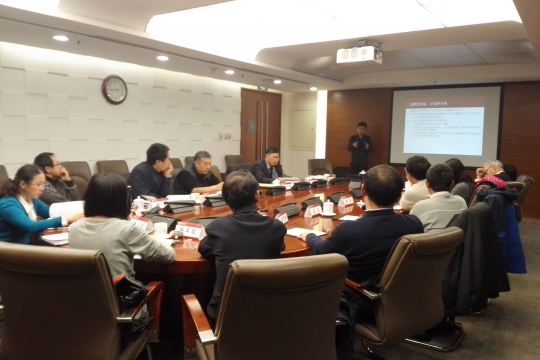High state subsidies have helped speed the growth of the renewable energy sector in China, but they now threaten the sustainability of the government’s funding policy for this sector. This is particularly true given the recent reduction in the cost of solar and wind technologies globally. Together, these factors are making the supply side of the sector extremely profitable in China, but are depleting state funds that are earmarked for this much-needed growth.
These are the findings of a recent review of China’s policy by environmental economists based at Peking University, in collaboration with international experts. This review was commissioned by the National Development and Reform Commission (NDRC) of China, the country’s ‘super ministry’ that oversees the formulation and execution of national economic policies, including energy policies. NRDC policymakers consulted with researchers at the Environmental Economics Program in China (EEPC), a research unit affiliated with Peking University in Beijing, to ask for a review of their current energy policy. They asked for evidence-based recommendations for how to continue to incentivise the renewable energy sector here, but in a way that is more cost-effective.
China became the world’s largest producer of solar and wind power in 2015, partly because of these generous state subsidies. But by 2016, China’s government spending on renewable subsidies amounted to about one-third of the country’s poverty aid, an estimated RMB 60 billion (USD 8.8 billion) per year. This took funding away from competing spending priorities, such as education and health.
In reviewing the renewable energy sector in China, researchers found that these subsidies were largely wasted, giving rise to considerable scope for an overhaul. Owing to technology innovations, the cost of producing wind power dropped by 50% between 2009 and 2016, while the cost of producing solar power dropped by 90% during that period. Meanwhile, the governmental subsidies were merely trimmed by 7.8% and 30% respectively in reaction. This gap has made this business increasingly profitable and stoked up the rampant installation of wind and solar power generators. During their field trip, EEPC researchers discovered to their astonishment that governmental permission to build a 50 megawatt solar power plant could sell for RMB 20 million on the black market. However, many of these plants became ‘ghost projects’ that do not contribute to power generation at all or do not operate at full capacity, since the generated electricity often cannot be transmitted to consumers. For one thing, the grid companies often favour competing energy sources that are more stable (such as coal), and tend to be lukewarm about intermittent renewables like wind and solar power. For another, the geographic distribution of renewable energy sources is rather uneven. The protectionist impulse to create a boom in local economies and employment has effectively driven many provinces away from importing renewables from wind- and solar-rich provinces. Notwithstanding the waste of their power generation capacity, which is known as ‘curtailment’, over-subsidised renewable energy producers are still profit-making. But the exchequer foots the bill.
In an attempt to tackle these issues, the NDRC and the World Bank commissioned a policy review from a research team led by Dr Min Wang from EEPC at Peking University, which is affiliated with the Swedish-based Environment for Development (EfD) initiative. The team worked with eminent energy economists from Renmin University in China and the University of British Columbia in Canada.
They conducted in-depth interviews with policymakers, renewable energy suppliers, and grid companies in western China, where some of the greatest waste of renewable energy is currently occurring. Moreover, they carried out an extensive review of energy policies in other countries where renewables are flourishing. This research project is still in progress but has already delivered influential policy advice in several workshops with the NDRC and the World Bank.
According to Dr Wang, the time is ripe for the government to reduce the subsidies, in light of the overcapacity of the sector and its rapidly declining production costs.
The researchers have concluded that this emerging industry is unlikely to mature under the shelter of excessive subsidies, and are lobbying for substantial cuts. In addition, they firmly hold the view that prospective subsidy policies should adapt more quickly and effectively to the ever-evolving technology and cost of producing renewables. Moreover, subsidies to renewables should be linked to the proportion of power that actually reaches consumers. In other words, further subsidy cuts should be imposed on producers that have a high curtailment rate. An auction mechanism could serve this purpose. This mechanism allows for subsidies to be allocated to the most competitive projects, which can thrive on lower subsidies. This would effectively reveal the actual costs of production, which are otherwise not disclosed by producers.
As a means to overcome the market barriers among different provinces, a renewable portfolio standard is advisable, which would require a minimum proportion of renewables in a province’s energy sources. To comply with this requirement, those provinces that are not endowed with sufficient renewable energy sources would resort to imports from other provinces instead of local coal-fired power plants.
In the long term, expanding China’s carbon emissions market and taxing air pollutants should be alternatives to subsidising renewables. The prime rationale for subsidising renewables is to boost their competitiveness against conventional energy sources such as coal. Increasing the costs of emitting carbon and other pollutants would serve the same purpose by disadvantaging coal-fired power plants, which are typically more pollution-intensive compared with wind and solar plants.
By the end of 2016, the NDRC had pledged to progressively reduce the subsidy rates in the following two years. The total amount of subsidies in 2018 was expected to be reduced by RMB 6 billion (USD 0.9 billion). This move is in line with EEPC recommendations.
By: Zhaoyang Liu and Min Wang
